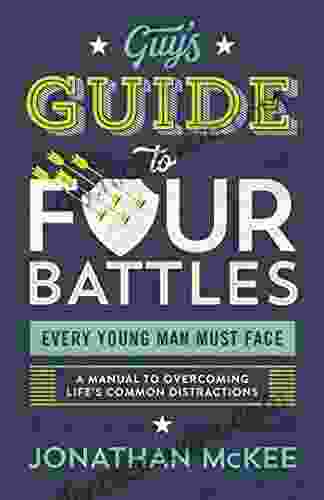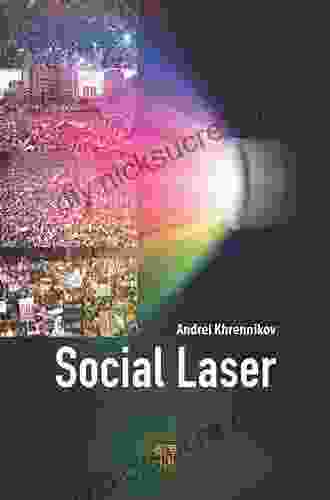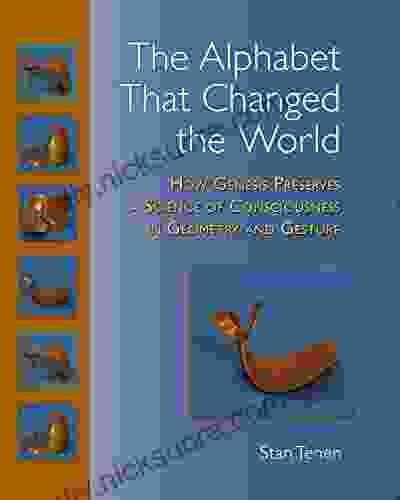: The Pervasive Issue of Distractions
In today's fast-paced, technology-driven world, distractions have become an omnipresent challenge. From the constant buzzing of smartphones to the siren song of social media, endless distractions compete for our attention, fragmenting our thoughts, draining our energy, and undermining our productivity.
4.8 out of 5
| Language | : | English |
| File size | : | 827 KB |
| Text-to-Speech | : | Enabled |
| Screen Reader | : | Supported |
| Enhanced typesetting | : | Enabled |
| Word Wise | : | Enabled |
| Print length | : | 146 pages |
| Lending | : | Enabled |
These distractions don't just impact our work lives. They also seep into our personal spheres, affecting our relationships, leisure activities, and overall well-being. If left unchecked, distractions can hijack our lives, leaving us feeling overwhelmed, stressed, and unfulfilled.
Chapter 1: Identifying the Culprits - Common Types of Distractions
The first step in overcoming distractions is to recognize and understand their various forms. Understanding the nature of our distractions allows us to develop targeted strategies to address them effectively.
- External Distractions: These originate from the environment around us, such as noise, interruptions, and technological devices.
- Internal Distractions: These arise within our minds, including negative thoughts, self-doubt, and boredom.
- Physical Distractions: These stem from discomfort or bodily needs, such as hunger, fatigue, or a cramped workspace.
Chapter 2: The Power of Mindfulness - Staying Present and Focused
Mindfulness is a powerful tool for managing distractions. By practicing mindfulness, we cultivate a heightened awareness of the present moment, allowing us to acknowledge and redirect our attention when distractions arise.
- Meditation and Deep Breathing: Engage in regular meditation sessions to train your mind to stay present. Practice deep breathing exercises to calm the nervous system and promote focus.
- Body Scan: Perform a body scan to become aware of bodily sensations, helping to reduce the pull of physical distractions.
- Gratitude Practice: Cultivate an attitude of gratitude by focusing on the positive aspects of your life. This can reduce the allure of distractions by shifting your perspective.
Chapter 3: Time Management Techniques - Structuring Your Day for Success
Effective time management is crucial for minimizing distractions. By structuring your day intentionally, you can create a framework that supports focus and minimizes interruptions.
- Pomodoro Technique: Break down tasks into 25-minute intervals separated by short breaks. This structured approach promotes focus and prevents burnout.
- Time Blocking: Allocate specific time slots in your schedule for different tasks, including dedicated distraction-free blocks.
- Prioritize Tasks: Use the Eisenhower Matrix to prioritize tasks based on urgency and importance, ensuring that the most critical tasks receive uninterrupted attention.
Chapter 4: Environmental Control - Creating a Distraction-Free Zone
Our physical environment plays a significant role in our ability to focus. Creating a distraction-free zone can help minimize external triggers and support sustained attention.
- Declutter and Organize: Remove unnecessary clutter and organize your workspace to create a clear and distraction-free environment.
- Minimize Noise: Use noise-canceling headphones or create a quiet workspace to block out distracting sounds.
- Optimize Lighting: Ensure adequate lighting to reduce eye strain and improve overall focus.
Chapter 5: Digital Detox - Unplugging for Enhanced Concentration
Digital devices can be major sources of distraction. Implementing strategies for digital detoxing can significantly enhance your ability to focus and maintain uninterrupted attention.
- Schedule Digital Breaks: Take regular breaks throughout the day from electronic devices to prevent screen fatigue and recharge your attention.
- Disable Notifications: Turn off unnecessary notifications that can interrupt your flow of concentration.
- Use Focus Apps: Utilize apps that block distracting websites and apps during designated work or study sessions.
Chapter 6: Building Focus and Concentration - Exercises and Techniques
In addition to managing distractions, it's important to actively develop your ability to focus and concentrate. Regular practice can strengthen your cognitive abilities and improve your resilience to distractions.
- Focus Exercises: Engage in exercises like the Attention Span Test or Mindful Observation to train your attentional muscles.
- Concentration Techniques: Practice techniques like the One-Thing Method, which involves focusing intently on a single task until completion.
- Visualization: Use visualization exercises to picture yourself staying focused and overcoming distractions.
Chapter 7: Overcoming Internal Distractions - Managing Negative Thoughts and Self-Sabotage
Internal distractions, such as negative thoughts and self-sabotaging behaviors, can be just as detrimental as external distractions. Addressing these internal roadblocks is essential for achieving lasting focus.
- Cognitive Restructuring: Identify and challenge negative thoughts, replacing them with more positive and empowering beliefs.
- Self-Compassion: Practice self-compassion by treating yourself with kindness and understanding, reducing self-criticism and self-doubt.
- Goal Setting: Establish clear and meaningful goals to provide a sense of purpose and motivation, reducing the allure of distractions.
: Regaining Control, Embracing Focus
Overcoming life's common distractions requires a multi-pronged approach that addresses both external and internal factors. By embracing mindfulness, implementing effective time management strategies, creating a distraction-free environment, practicing digital detoxing, and developing your focus and concentration, you can regain control of your attention, maximize your productivity, and achieve a more fulfilling life.
Remember, overcoming distractions is an ongoing journey, not a destination. There will be setbacks along the way. However, with persistence and the strategies outlined in this manual, you can break free from the grip of distractions and unlock your true potential.














































































































































































































































































































































































































































































